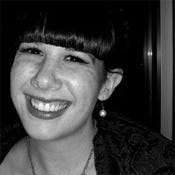Cancer Social Network Supports Meaningful Use GoalsCancer Social Network Supports Meaningful Use Goals
Breast cancer patients and survivors show more engagement in their care, a key Meaningful Use stage 2 goal, with the help of social network MyBCTeam.


7 E-Tools To Keep Patients Engaged
7 E-Tools To Keep Patients Engaged (click image for larger view and for slideshow)
Although still in beta, MyBCTeam--short for My Breast Cancer Team--is a social network that's 2,000-women strong and proving social comes into play in a big way when it comes to Meaningful Use stage 2 and patient engagement requirements.
MyBCTeam is a branch of MyHealthTeams, a company that creates social networks for chronically ill populations. The company launched MyAutismTeam in June 2011 and is now focused on building MyBCTeam and giving women who have been struggling with or overcoming breast cancer a place to not only connect but become more engaged in their care.
"Alluding to Meaningful Use ... the outcome the government hoped for is better outcomes, empowered individuals, more robust data in health systems, healthier Americans and increased transparency," said Mary Ray, cofounder of MyHealthTeams, in an interview with information Healthcare. "The first three of those--better outcomes, empowered individuals and more robust data--we think comes from informed and empowered users of our site."
Prior to founding MyHealthTeams, Ray and her partner, Eric Peacock, recognized chronic illness communities were a severely underserved market. Together, they founded the company based on the idea that if social networking works so well for consumers, they could make it work for those living with a chronic illness.
"We decided to create a social network to serve this community, so they can find the best people around them who can help them. [This includes] teams of providers and beyond ... [W]hen women use our site, we have incredibly high engagement because of the connections, and they're saying things on here they could never say on Facebook or Twitter. They get more informed through the perspective they get from other women."
[ For the latest development on Meaningful Use, see Meaningful Use Stage 2 Rules Finalized. ]
Users of the site have access to similar Facebook-like functions: an activity stream featuring updates and conversations, comments on posts, a "like" function and a "hug" function. "The hug feature is a popular way of expressing empathy," said Ray. "Sometimes, it's tough to even write anything back [to a user], and you don't want to 'like' something that's maybe a bit more sensitive. It's like giving a hug in person."
The site's "sweet spot," Ray continued, is how women go about meeting each other. Users can search for other users based on their location, type of cancer, the type of surgery or hormone surgery they've undergone and their age. Ray says "Today, hundreds of people use IT to connect like this in multiple ways, like Match.com."
"The reason engagement is so high on our site is because people are making real human connections here," Ray continued. "It isn't where you go to get technical information, like the American Cancer Society or BreastCancer.org. Here's where you find people who have been through this already."
Additional features of the site include user profiles, which show demographics and personal information. Ray pointed out a user can feel free to share as much or as little about their treatment experiences, and even their outlook on life, as they wish. "They do this because the more information [they provide], the easier it is to find people similar to [them]. Trust is built on how much you want to share with other people."
In addition to other site functions, like search options focusing on keywords and pinboards giving users a more visual experience, Ray said users can create their own care "teams" and add a myriad of health professionals to this section of their profile. A user implicitly endorses these professionals, and "the fact [a professional] made it on her team is amazing," said Ray.
Professionals on a user's care team can include physicians, but also breast cancer care coordinators, henna tattoo artists, yoga instructors and wig makers. "We have a directory of providers in our database, but we only have that so when people are adding providers, it's easier to find them," said Ray. "[Users] give an explanation of why they recommend this person, and it's strictly among users. We do have channels, though, and we're working on adding features for providers to update their information."
Circling back to Meaningful Use, Ray said the site helps with the anxiety and preparedness patients experience when visiting their doctor. "The more prepared they are, the greater it is because this isn't solely about treatment; it's about living and embracing treatment," said Ray. This has a significant impact on MU problem lists, Ray continued. "People have to stay updated, and these women are more prepared to say, 'These are the drug interactions I'm experiencing. Here are the problems and my symptoms.' They're not going in with this panic--this is about sharing information with doctors, so they can decide how to best be treated. There's a bridge between the office and the everyday life of someone before the office visit."
About the Author
You May Also Like






